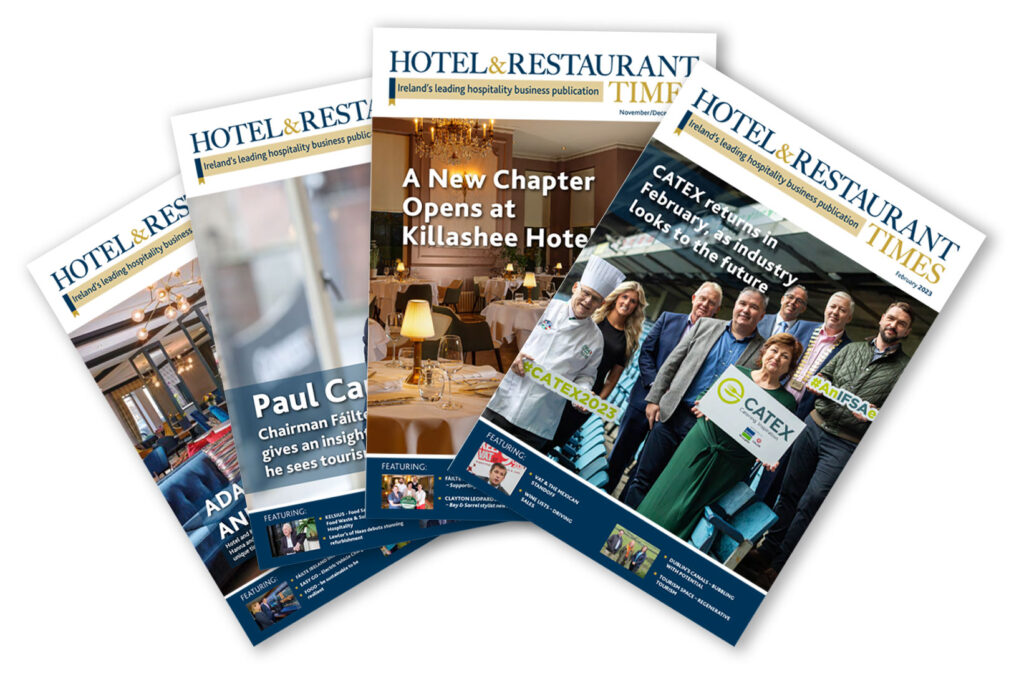A new report by EY titled ‘What now for city tourism?’ has found that city tourism has been more severely impacted than any other form of tourism across the island of Ireland.
EY benchmark analysis based on STR data for 10 different European countries has found that hotel occupancy rates in Dublin were 56% lower than regional hotel occupancy rates during the last week of July and second week of September 2020. This trend is also witnessed in Europe, as occupancy rates in main capital cities are on average 41% lower than their regional counterparts.

Irish regional hotels have performed relatively well during the summer period analysed with a 54% occupancy rate, outperforming their European counterparts. Dublin hotels have underperformed with a 24% occupancy rate compared with 38% in a city like Berlin for example.
The city tourism model relies mainly on two drivers: oversea tourists and business tourists. It has been most severely impacted by the restricted activity in airports and the closing of borders, which affected up to 96% of all worldwide destinations at the beginning of April 2020, according to the United Nations World Tourism Organisation (UNWTO).
Although short-term emigration and longer holidays have been reduced by quarantine measures, city tourism has been more significantly impacted given its traditionally shorter trip duration.
City tourism also relies heavily on business tourists travelling for meetings, conferences, and events, the majority of which were cancelled due to public health restrictions. This market, which is responsible for more than 1 in every 6 hotel nights in Ireland, continues to be challenged.
The Eurozone has already suffered a 12% decrease in GDP in Q2 2020[1] and it is likely that businesses that have already seen considerable cost savings from reduced business travel may continue to retain some of these efficiencies going forward. Traditional in-person conferences will still be organised but the sector will undoubtedly continue to face digital disruption. With video conference providers reporting significant increases in revenue and users, there is no doubt communications technology has filled a void and will continue to play a part in the post-pandemic world.
Commenting on the performance of regional hotels, Simon MacAllister, Strategy & Transactions Partner for EY Ireland said, “Regional hotel occupancy was supported by domestic tourism over the Summer, especially on the island of Ireland where quarantine measures were introduced. The coming months are expected to remain challenging given the on-going restrictions and the difficult economic environment.”
Commenting on the gap between regional and city occupancy in Ireland, Yannick Cabrol, Hospitality and Tourism Assistant Director for EY Ireland said: ‘’Ireland’s relative urban tourism weakness is a result of a number of factors. As a small open island economy the level of business tourism is very high, especially into Dublin where a significant proportion of Ireland’s most successful business are located. Typically Irish residents with a higher purchasing power are located in Dublin and they often drive the domestic tourism market. Many people decided to leave the city over the summer to work remotely or to enjoy some time off. In addition to this, overseas visitors who are interested in vibrant city destinations to cities such as Dublin were less likely to travel during the pandemic.’’
Optimism for the future
The fact that savings deposits were up 10.9% YoY in September (according to the Central Bank), represents significant recovery potential for the tourism sector in the years ahead. However, given North America accounts for approximately 20% of all international tourists to Ireland, it is forecast that private consumption of American tourists may not return to pre-COVID-19 levels before 2022.
Good news on vaccine development and quick testing methods operating at airports, allow for tourism recovery hopes in the medium term. In the short-term however, existing hospitality businesses will depend on the continuity of government supports.
Yannick Cabrol, added, “City tourism is not over. The desire to meet, to travel, to feel inspired and enriched remains strong and should give a degree of hope to many at a very challenging time. Delivering a resilient and inclusive city tourism model benefitting locals and tourists is needed now more than ever. Identifying and delivering tangible projects to make this vision happen is a challenging but essential task for governments and cities in the months to come.”











